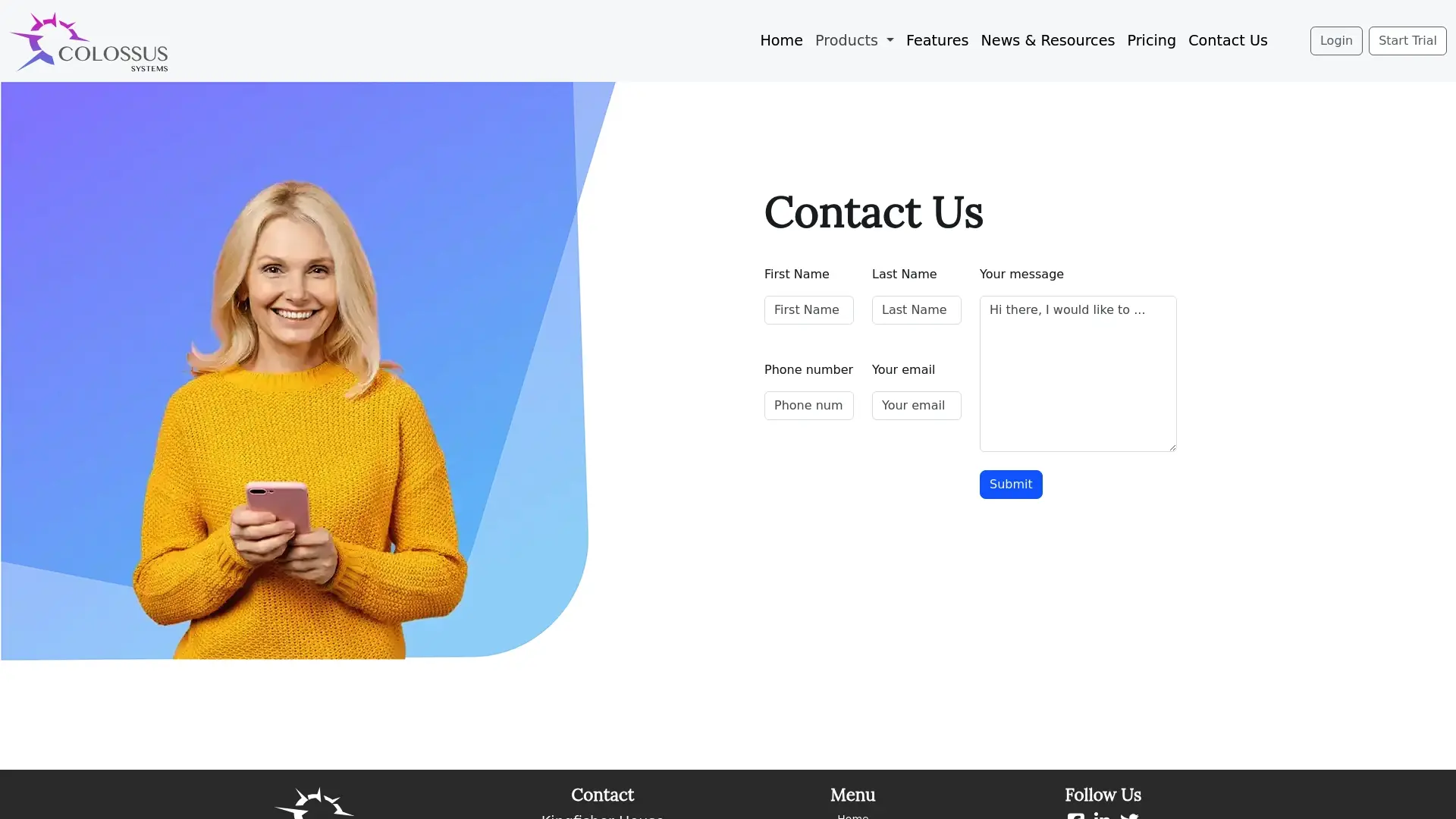What Is Membership Engagement? Complete Overview

Did you know that organizations with strong member engagement see retention rates climb as high as 90 percent? Connection and involvement matter more than ever for any group hoping to thrive. When members feel seen, heard, and valued, they step up with greater enthusiasm and loyalty. The strategies that foster these ties reveal how organizations can spark meaningful action and build a community where every member plays a vital role.
Table of Contents
- Defining Membership Engagement Essentials
- Types of Membership Engagement Approaches
- Key Features of Effective Engagement
- Common Challenges and Mistakes to Avoid
- Measuring and Enhancing Engagement Success
Key Takeaways
| Engagement Type | Key Features of Effective Engagement |
|---|---|
| Holistic Engagement Strategy | Membership engagement involves personal connections and active participation, moving beyond transactional relationships to create a community ecosystem. |
| Diverse Engagement Levels | Engagement approaches can be classified into different levels, from observational to leadership, reflecting varying degrees of participation and commitment. |
| Continuous Adaptation | Organizations must regularly assess and adapt their strategies based on member feedback and evolving needs to enhance engagement effectiveness. |
| Complex Metrics Measurement | Successful engagement measurement goes beyond surface-level metrics, incorporating qualitative assessments, demographic analyses, and loyalty tracking. |
Defining Membership Engagement Essentials
Membership engagement is the strategic process of creating meaningful connections between an organization and its members, transforming passive participation into active involvement. According to research from the Council of Nonprofits, effective engagement fundamentally focuses on highlighting an organization’s mission and demonstrating clear membership value.
At its core, membership engagement involves developing personalized communication strategies that make members feel valued, heard, and integral to the organization’s success. The Ohio Museums Association emphasizes that successful engagement requires a multifaceted approach encompassing several key elements:
- Creating exclusive member benefits
- Developing robust communication channels
- Expressing genuine gratitude to supporters
- Providing opportunities for meaningful interaction
Successful membership engagement goes beyond transactional relationships. It is about building a community ecosystem where members feel emotionally connected to the organization’s broader purpose. This means crafting experiences that resonate personally, offering members tangible value while simultaneously making them feel part of something larger than themselves. For more insights into boosting member engagement, check out our guide on effective community engagement tactics.
Ultimately, membership engagement is a dynamic, ongoing process that requires consistent effort, strategic thinking, and a genuine commitment to understanding and serving members’ evolving needs and expectations. By prioritizing meaningful interactions and demonstrating continuous organizational value, organizations can transform casual members into passionate, long-term advocates.

Types of Membership Engagement Approaches
Membership engagement isn’t a one-size-fits-all strategy, but rather a nuanced approach with multiple interaction levels. According to the Commons Library’s Engagement Pyramid, organizations can strategically categorize member involvement across different depths of participation and commitment.
The primary types of membership engagement approaches can be broadly classified into several distinct levels:
Here’s a summary comparison of the main types of membership engagement approaches:
| Engagement Type | Level of Participation | Typical Activities |
|---|---|---|
| Observational Engagement | Passive | Consuming content Reading newsletters |
| Endorsement Engagement | Minimal active | Liking posts Sharing content |
| Participatory Engagement | Active | Attending events Providing feedback |
| Collaborative Engagement | Highly involved | Project contributions Co-creating content |
| Leadership Engagement | Strategic and influential | Board roles Leading initiatives |
- Observational Engagement: Members who passively consume content and information
- Endorsement Engagement: Members who show support through likes, shares, and minimal interactions
- Participatory Engagement: Members actively attending events, responding to surveys, and providing feedback
- Collaborative Engagement: Members contributing directly to organizational initiatives and projects
- Leadership Engagement: Members taking strategic roles, serving on boards, or driving organizational direction
Organizations seeking to improve member engagement strategies must recognize that members will naturally migrate between these engagement levels. The key is creating flexible pathways that allow smooth transitions and provide compelling reasons for members to deepen their involvement.
Successful engagement approaches require continuous adaptation, personalized communication, and a genuine commitment to understanding individual member motivations. By developing multi-layered engagement strategies that respect diverse participation preferences, organizations can create vibrant, dynamic communities where members feel genuinely valued and empowered.
Key Features of Effective Engagement
Effective membership engagement is a sophisticated blend of strategic approaches designed to create meaningful connections between organizations and their members. According to research from Chambers of Commerce, successful engagement strategies encompass hosting meaningful events, providing tailored services, and implementing targeted loyalty programs.
The key features of robust membership engagement can be distilled into several critical components:
- Personalized Communication: Crafting messages that resonate with individual member needs and interests
- Continuous Value Proposition: Demonstrating ongoing organizational relevance and member benefits
- Multi-Channel Interaction: Offering diverse engagement platforms including digital, in-person, and hybrid options
- Responsive Feedback Mechanisms: Creating transparent channels for member input and continuous improvement
- Strategic Recognition Programs: Acknowledging and rewarding member contributions and milestones
Organizations looking to boost member engagement through software solutions must recognize that effective engagement is not a static process, but a dynamic, evolving strategy. The most successful approaches combine technological tools with genuine human connection, creating an ecosystem where members feel genuinely valued and integral to the organization’s mission.
Ultimately, effective engagement transcends transactional interactions. It requires a holistic approach that combines data-driven insights, emotional intelligence, and a commitment to creating meaningful, long-lasting relationships that benefit both the organization and its members.
Common Challenges and Mistakes to Avoid
Membership engagement is a complex process fraught with potential pitfalls that can undermine an organization’s best intentions. According to the American Society of Association Executives, one of the most critical mistakes organizations make is relying solely on superficial activity metrics to gauge engagement, which can be profoundly misleading.
Several common challenges can derail effective membership engagement strategies:
- Metric Misinterpretation: Confusing participation numbers with genuine member commitment
- Communication Disconnect: Failing to personalize communication and understand member needs
- Value Perception Gap: Not clearly articulating the tangible benefits of membership
- Technological Barriers: Using complex or non-intuitive engagement platforms
- Inconsistent Experience: Providing irregular or unpredictable member interactions
Organizations seeking to understand how to boost member engagement must recognize that engagement is fundamentally about building relationships, not just tracking numbers. The most successful approaches prioritize genuine connection over mechanical interactions, creating meaningful pathways for members to feel truly valued and understood.
Navigating these challenges requires a holistic, empathetic approach. Organizations must continuously evolve their strategies, actively seek member feedback, and remain adaptable to changing member expectations. By recognizing and proactively addressing these common pitfalls, membership organizations can create more robust, engaging, and sustainable community experiences that resonate deeply with their members.
Measuring and Enhancing Engagement Success
Measuring membership engagement requires a sophisticated approach that goes beyond simplistic participation tracking. According to the American Society of Association Executives, organizations must focus on assessing member loyalty and commitment rather than relying solely on surface-level metrics.
Key strategies for measuring and enhancing engagement success include:
- Qualitative Impact Assessment: Evaluating depth of member interactions and emotional connection
- Comprehensive Metric Tracking: Monitoring multiple engagement indicators simultaneously
- Feedback Loop Integration: Creating systematic channels for member input and continuous improvement
- Segmentation Analysis: Understanding engagement patterns across different member demographics
- Longitudinal Performance Tracking: Measuring engagement trends over extended periods
Organizations seeking to understand digital engagement dynamics must develop nuanced approaches that capture both quantitative and qualitative aspects of member participation. This means moving beyond simple attendance or login numbers to understand the meaningful ways members interact with and derive value from the organization.
Ultimately, successful engagement measurement is an iterative process. It requires constant refinement, genuine curiosity about member experiences, and a willingness to adapt strategies based on emerging insights. By creating a dynamic, responsive engagement ecosystem, organizations can transform passive membership into vibrant, mutually beneficial communities that continuously evolve to meet changing member needs.
Transform Your Membership Engagement with Colossus Systems
Understanding membership engagement means recognising the challenge of turning passive members into active, committed participants who feel truly valued. The article highlights the importance of personalised communication, multi-channel interaction, and continuous value delivery to overcome common pitfalls like communication disconnect and metric misinterpretation. If you are seeking to create deeper connections and foster leadership involvement within your organisation, these goals demand a platform that can streamline event planning, CRM, email marketing, and more – all from one place.

Take your member engagement to the next level with Colossus Systems. Our SaaS platform is designed to empower membership organisations by offering highly customisable tools to engage members meaningfully through digital channels. Whether managing events, automating communications, or analysing engagement trends, we provide the solutions that turn casual participation into passionate advocacy. Don’t let your membership experience suffer from inconsistent interactions or technological barriers. Start enhancing member loyalty and organisational growth today by connecting with us at Contact Colossus Systems. Discover how to boost engagement effectively and create a vibrant member community now.
Frequently Asked Questions
What is membership engagement?
Membership engagement is the strategic process of creating meaningful connections between an organization and its members, focusing on transforming passive participation into active involvement.
What are the key elements of effective membership engagement?
Key elements include creating exclusive member benefits, developing robust communication channels, expressing gratitude, and providing opportunities for meaningful interaction.
How can organizations measure membership engagement?
Organizations can measure membership engagement by assessing qualitative impact, tracking comprehensive metrics, integrating feedback loops, analyzing member demographics, and monitoring engagement trends over time.
What common challenges do organizations face in membership engagement?
Common challenges include misinterpreting metrics, communication disconnect, a gap in perceived value, technological barriers, and inconsistent member experiences.
Recommended
- Improving Member Engagement: Proven Strategies for 2025|CS
- Effective Community Engagement Tactics for Lasting Connections|CS
- How to Grow Membership: Proven Strategies for Organisations|CS
- How to Boost Member Engagement and Why use Engagement Software|CS
- Understanding What is Social Media Engagement - Jarrod Harman